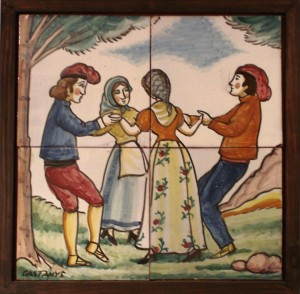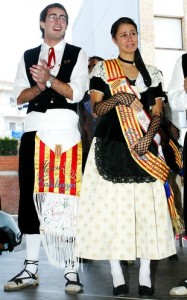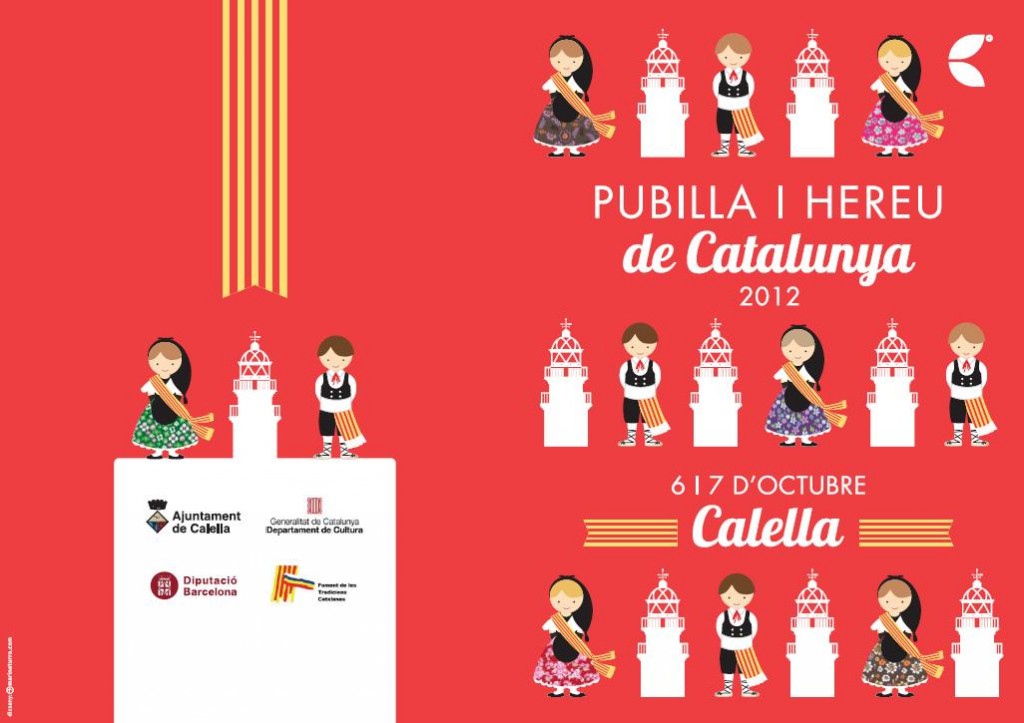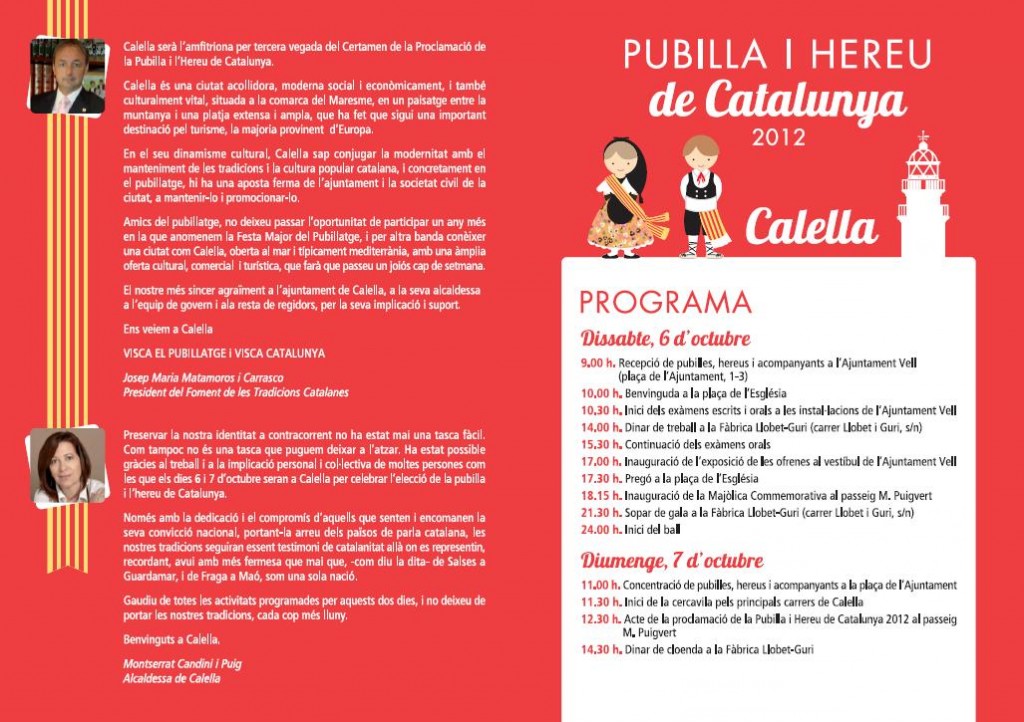 On 6 and 7 October Calella will become the capital of “pubillatge” after Foment de les Tradicions Catalanes appointed him to welcome the election of “Pubilla” and “Hereu” of Catalonia 2012.
On 6 and 7 October Calella will become the capital of “pubillatge” after Foment de les Tradicions Catalanes appointed him to welcome the election of “Pubilla” and “Hereu” of Catalonia 2012.
Besides the act of choosing the hereu and pubilla and throughout the weekend Calella host a full program of activities in the vicinity of popular culture and traditions of Catalan State.
The party will serve to dismiss the pubilla of Catalonia 2011, Elena Gimenez and hereu of Catalonia, Pau Bartrolí, from Calella.
The “pubilla” figure goes back to rural families in the eighteenth and nineteenth centuries. During these centuries the women pubilla was instituted heir, when there was no son or heir, and was in charge of preserving the estate. The distinctiveness of the figure of the Modern Age pubilla was to be a mix between the woman-housewife and the woman manager of the business. This is a legal and legally own the Principality of Catalonia, including even now within the Catalan civil law. The important, then, is the fact not exist in any other culture, nation or place in the world.
One of the most important aspects is the pubillatge is clothing. It happens one of the most proud of pubilles and Hereus, always trying to fit their personality. With a distinctly traditional dresses look typical proclamations they attend. In no case is a costume, is their uniform, a way of dressing that distinguishes them, that identifies them.
Both depart as a main costume velvet. Girls wears dress and boys slacks and a vest. As can be seen, among girls include supplements. The most striking are the bully, used to collect hair and “mitenes”, covering the arms. For boys, the accessories reflect very well the Catalan identity, especially the “barretina” and traditional “esperdenyes”, as part of the culture.
Finished the Spanish Civil War, back in the 50s, breaks the term «pubilla» to the traditional name, linked to the Catalan law and only referred to being the daughter inherited the house. It begins to celebrate the Catalan Pubilla Contest, using the same concept to represent an ideal of traditional Catalan woman. It had only daughters of the wealthiest families. At first, the act was heavily influenced by the morality imposed by Franco. They wanted to promote the moral virtues of the candidate, as the dedication to home and family, but the physical beauty ended up being a very important condition in the face of the popular vote. Many newspapers of the time announcing the event and published pictures of the candidates.
On November 19, 1979, with Franco well dead and buried, comes an initiative to preserve the history and customs of Catalonia, the Catalan Traditions Promotion. Its founders have their Statutes waiting to become an officially recognized entity, which happens a year later.
Nowadays it had held the appointment of pubilla, leaving the hereu band, which was the first in the line of inheritance. Unlike pubilla, the figure of hereu was not determined either by their dedication to the home or for their beauty. In 2000, for the appointment of pubilla and in the presence of a few hundred attendees, appeared banners calling for the figure of the hereu. The request caused rifts in the board of the Promotion of Catalan Traditions. However, the requirement finally was accepted and introduced the figure of the hereu. Since then, a thousand young boys have already won the title.
Currently the “pubillatge” wants to be a commitment to tradition that aims to represent his township youth in a context essentially festive without having to go to the political side. Thus, candidates have to pass tests based on knowledge of Catalan culture and history and present, and the gift of speech.


























